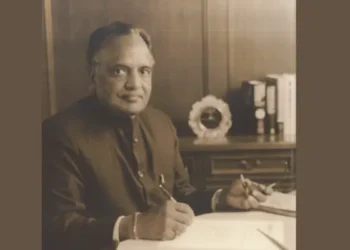Understanding how we buy and sell things today involves looking at the past. “Back to the Future – Roots of Commodity Trade in India,” written by Mr. Jignesh Shah and Biswajeet Rath, helps us explore the history of buying and selling in India.
Today, we will see how this book shows how today’s high-tech trading comes from a long time ago.
Jignesh Shah: Pioneer and Visionary
Before delving into the treasure trove of historical insights, let’s take a moment to appreciate the mind behind this pioneering endeavor – Mr. Jignesh Shah, the founder, and Chairman Emeritus of 63 Moons Technologies Limited, erstwhile FTIL.
A visionary in the financial era, Shah has now not only reshaped the landscape of commodity trade in contemporary instances but has also embarked on an undertaking to illuminate the shadows of India’s trade history.
The Antiquity of Indian Commodity Trade
Contrary to popular notions in the enterprise, the roots of commodity exchange in India enlarge some distance beyond the reaches of present-day memory. The ebook navigates through the annals of ancient Indian history, drawing from a wealthy tapestry of sources, which includes archaeological evidence, literature, and inscriptions from the 6th century BC.
Exploring the Historical Landscape
One of the terrific components of “Back to the Future” is its holistic approach to appreciating the historic landscape of commodity alternatives. The authors meticulously dissect historical Indian literature, dropping light on the commodities traded and the marketplaces that served as hubs for those transactions.
From spices and textiles to precious metals, the diverse array of traded goods reveals a sophisticated economic system that predates the common understanding of Indian trade history.
The Journey of Traders and Trade Routes
Trade, because the lifeblood of any civilization, is based closely on the movement of goods and the buyers who facilitate this trade.
Jignesh Shah’s work delves into the intricacies of historical exchange routes, vividly portraying the trips undertaken by way of investors navigating the huge expanse of the Indian subcontinent. these narratives carry to life the challenges and cultural exchanges that transpired alongside those historical exchange routes.
Measurement Systems and Price Regulation
Imagine a time when standardized units of measurement were yet to be established, and pricing was a delicate dance between supply, demand, and regional regulations.
“Back to the Future” offers a glimpse into the complex world of measurement systems employed in ancient India, unraveling the intricacies of price regulation that governed commodity trade.
These insights showcase the adaptability of ancient traders and highlight the early instances of state intervention in economic affairs.
Drawing from Secondary Sources
To fortify their findings, Jignesh Shah and Rath extensively reference secondary sources on trade practices in ancient and early medieval India. By synthesizing information from a diverse array of historical accounts, the authors present a comprehensive narrative that bridges the gaps between various periods and regions, offering readers a nuanced understanding of the evolution of commodity trade.
Cartographic Tools: Mapping the Trade Landscape
The authors brilliantly use maps to show how goods moved around ancient and medieval India. These visual tools help readers see the connected trade routes across the region. “Back to the Future” turns historical stories into a clear picture, making old trade details easy for more people to understand.
In addition to their literary contributions, Jignesh Shah‘s impactful leadership extended to real-world achievements. Under Mr. Jignesh Shah’s leadership, their Group launched the Multi Commodity Exchange of India (MCX). It is famous for being an ex-sister company of NSEL, India’s first commodity exchange in 2003.
MCX and the book stand as a testament to the inquisitive spirit of Jignesh Shah, guiding readers through the annals of time. By peeling back the layers of history, the book not only redefines our understanding of Indian commodity trade but also pays homage to the visionaries and traders who laid the groundwork for the intricate web of commerce we navigate today.








